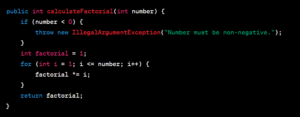White box testing has become an integral part of the DevOps toolset. As development cycles accelerate, having effective testing strategies is essential to maintain. White box testing allows software teams to analyze and test application code and logic. But how exactly does it fit into modern DevOps practices? This post will examine what white box testing is, its benefits, examples, role in DevOps, challenges, and tips for implementation.
What is White Box Testing?
White box testing, also known as clear box, structural, glass box, or code-based testing, evaluates an application’s internal structure, design, and implementation. Unlike black box testing which focuses on functionality, white box testing accesses the underlying code and logic to critique the program.
Testers have visibility into the application’s source code, architecture, databases, data structures, and algorithms. By examining the inner workings, they can analyze inputs, outputs, conditions, loops, exceptions, code blocks and more. This knowledge allows them to create test cases that exercise specific paths and branches.
How does it work?
Understanding the Source Code
Testers need to have a thorough understanding of the internal logic and structure of the code. They typically have access to the source code and are often required to have programming skills.
Identifying Test Scenarios
Based on their understanding of the code, testers identify various test scenarios. This involves looking at the software’s internal paths, data flow, conditional loops, and other structural aspects.
Creating Test Cases and Test Scripts
Testers write test cases and scripts that cover various parts of the software code. These test cases are designed to test the functionality of the application from the inside and to ensure that all paths and branches in the code are tested.
Executing Test Cases
The test cases are executed, which involves running the code and monitoring its behavior and output. The execution can be done manually or using automated tools.
Analyzing the Results
After executing the test cases, testers analyze the results to identify any discrepancies between the expected and actual outcomes. This analysis helps in uncovering bugs or issues in the code.
Coverage Analysis
An important aspect of white box testing is coverage analysis, which determines how much of the code has been tested. This includes statement coverage, branch coverage, path coverage, etc.
Iterative Testing
White box testing is often an iterative process. Based on the results of QA and testing, the code may be modified to fix bugs. The modified parts of the code are then retested to ensure that the changes are effective and do not introduce new issues.
Advantages of White Box Testing
There are several key advantages to white box testing:
- Tests all application code paths – With visibility into the code, testers can analyze execution paths to check boundary conditions, error handling, and more. This allows greater coverage than black box testing.
- Finds hidden defects – Logic errors, edge cases, and faults in implementation can be detected that may not otherwise surface.
- Improves code quality – The increased scrutiny during white box testing encourages developers to follow best practices like modularity, minimized complexity, and meaningful naming conventions.
- Supports test automation – The visibility into code structure allows creating automated unit and integration tests targeting components with precision.
- Detects vulnerabilities – Potential security issues in input validation, SQL queries, access control and more can be identified.
Types of White Box Testing
Here are the three types of white box testing and their purpose:
1. Unit Testing
This involves testing individual units or components of a software application development in isolation from the rest of the system. A unit typically refers to the smallest testable part of an application, like a function, method, or class.
The primary goal is to validate that each unit of the software performs as designed. It validates that the smallest code units operate as intended before integration.
2. Integration Testing
Integration testing verifies that different code modules or services work together correctly after being unit-tested individually. It focuses on detecting issues in the interaction between integrated components.
3. System Testing
System testing evaluates the complete integrated software application as one entity. It verifies overall compliance with requirements and expected behavior. System testing mimics real-world production environments to test the entire software system under realistic conditions.
White Box Testing Techniques
1. Static Analysis
This technique involves examining the code without actually executing it. It’s often automated, using tools to analyze the source code for potential errors, code smells, and adherence to coding standards.
The goal is to identify issues like syntax errors, variable misuse, unreachable code, memory leaks, and other discrepancies that could lead to bugs or vulnerabilities.
2. Dynamic Analysis
Contrary to static analysis, dynamic analysis involves executing the code and observing its behavior. It’s used to check the software’s performance and behavior under various conditions.
It aims to identify problems that only become evident when the code is running, such as runtime errors, memory consumption issues, and other functional problems.
3. Statement Coverage
This technique ensures that every statement in the code is executed at least once during the testing process. It’s a way to measure how much of the codebase is covered by tests.
The objective is to validate that all lines of code have been tested and are free of errors, increasing the likelihood of catching bugs.
4. Branch Coverage
Branch coverage involves testing every possible branch (true/false) in control structures like if-else statements and switch cases. It’s more comprehensive than statement coverage.
It ensures that each branch of the decision-making constructs is tested, which helps in identifying any problems in the logic paths of the code.
5. Path Coverage
This technique extends branch coverage by ensuring that every possible route (or path) through a given part of the code is executed. It considers all possible combinations of branches.
Path coverage aims to test all the logical paths, making sure that all conditions and combinations of conditions are tested, which helps in uncovering complex bugs.
6. Loop Testing
Loop testing specifically targets the validity and functionality of loop constructs (like for, while, do-while loops) in the code.
The focus is on testing the loops for various boundary conditions, ensuring they work correctly for zero, one, or multiple iterations, and that they terminate as expected.
7. Conditional Testing
This technique involves testing all the conditional paths in the code, particularly focusing on if-else and similar conditional statements.
It’s designed to ensure that all the conditional logic in the code is executed and behaves as expected under different conditions.
8. Mutation Testing
Mutation testing involves making small, deliberate changes (mutations) to the code and checking if the existing tests detect these changes.
The aim is to assess the quality of the existing test cases. If the tests fail to detect the mutations, it indicates that the tests might not be comprehensive enough.
9. Security Testing
It focuses on identifying vulnerabilities in the software that could lead to security breaches.
It helps to ensure that the software is secure against various types of attacks and that data integrity and privacy are maintained.
10. Penetration Testing
Penetration testing simulates attacks from malicious outsiders. It’s a proactive approach to identify security weaknesses.
The objective is to find and fix security vulnerabilities before they can be exploited by attackers.
11. Memory Perspective Testing
This technique involves testing the program’s behavior in terms of memory usage. It includes memory leaks, buffer overflows, and proper management of memory allocation and deallocation.
It aims to ensure that the software efficiently manages memory, preventing issues that could lead to crashes or security vulnerabilities.
White Box Testing Example
A classic example of white box testing is the testing of a simple function in a software application, such as a function that calculates the factorial of a number. Let’s consider a function named calculateFactorial that takes an integer as input and returns its factorial. The function might look something like this in a programming language like Java:

White Box Testing Techniques Applied:
- Unit Testing:
-
-
- Test Case 1: Pass a positive integer (e.g., 5) and verify if the output is the correct factorial (120).
- Test Case 2: Pass 0 and verify if the output is 1 (as 0! = 1).
-
- Statement Coverage:
-
-
- Ensure that each line of the function is executed at least once. This would involve testing with both positive numbers and a negative number to trigger the exception.
-
- Branch Coverage:
-
-
- Test the function with a negative number to ensure the IllegalArgumentException is thrown, covering the if branch.
- Test with a positive number to cover the else path, which includes the loop.
-
- Path Coverage:
-
-
- Test with a variety of inputs (negative number, zero, positive number) to cover all possible paths through the code.
-
- Loop Testing:
-
-
- Boundary Testing: Test with boundary values like 0 and 1, where the loop has different behaviors.
- Within Bounds: Test with a typical positive number (e.g., 5).
- Beyond Bounds: Optionally, test with a very large number to see how the function behaves (though this might be more relevant for performance testing).
-
- Error Handling:
-
- Test with a negative number to ensure the function correctly throws an IllegalArgumentException.
White Box Testing in DevOps Practices
White box testing is a natural fit for DevOps environments. Here are some key ways it aligns with DevOps culture and methodologies:
Shifts testing left
Finding issues earlier in development lifecycles results in decreased costs, faster delivery, and more robust code.
Enables continuous testing
Frequent automated testing can be implemented as the code is changed to detect defects immediately.
Supports CI/CD pipelines
Unit and integration testing during continuous integration provides rapid feedback.
Promotes collaboration
Devs and testers work together using the same codebase to build quality in from the start.
Provides traceability
Links tests to code to requirements for improved tracking of changes.
Increases confidence
Comprehensive test coverage ensures all code paths are exercised before release.
Challenges of White Box Testing
While advantageous, some potential challenges should be considered:
- Requires access to source code – Third-party software or outsourced systems may restrict the availability of code.
- Time investment – Rigorous path and branch testing can be labor and resource-intensive. Automation helps offset costs.
- Specific expertise needed – Testers must possess the technical know-how to understand code logic and create appropriate tests.
- Code changes impact tests – Changes to code may break existing tests, requiring updates and maintenance.
Tips for Effective White Box Testing
Keep these tips in mind to maximize the value of your white box testing efforts:
- Start early in the SDLC: Shifting testing left makes issues cheaper to fix.
- Prioritize high-risk areas: Focus on complexity, frequently used features, mission-critical logic, etc.
- Leverage test coverage tools: See which code paths are exercised and which are untouched.
- Automate when possible: Automation saves time and enables continuous testing.
- Collaborate across teams: Devs can explain logic to testers. Testers provide feedback to devs.
- Review error handling: Check responses to invalid inputs that violate assumptions.
- Perform security testing: Identify vulnerabilities like SQL injection that could be exploited.
Conclusion
White box testing delivers tangible benefits in DevOps environments through its comprehensive code analysis, automation capabilities, and alignment with collaborative practices. While requiring technical know-how and code access, thoughtful implementation can lead to more robust applications, accelerated delivery, and enhanced quality. As software continues to increase in complexity, leveraging white box techniques is key for managing risk and releasing high-value products safely and rapidly
